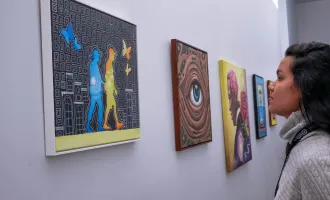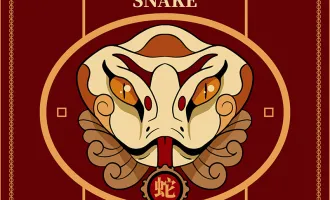
The New Look by Dior
This is part 3 of the limited series on the celebrated haute couture designer, Christian Dior.
Christian Dior presented his first haute couture collection, named “Corolle,” in February 1947 at 30 Avenue Montaigne, Paris. However, Carmel Snow, the editor-in-chief of Harper’s Bazaar at the time, called it “The New Look,” and that was the name that stuck.
She had a reason for naming it the way she did, as the collection’s looks were far from what anyone was expecting.
Unlike other designers then, Dior had crafted his looks around two ultra-feminine silhouettes: Corolle, with its tight-fitting bodice, narrow waist, and full skirt, and Eight, with its narrow waist, neat curves, and accentuated hips.
But it was the collection’s “Bar Suit” that stole the show, prompting the fashion world’s preference for Snow’s phrase, “The New Look.”
Considered an icon of Dior and of fashion history in general, the outfit was seen as revolutionary.
It consisted of a cream-colored jacket with narrow shoulders, and a highly accentuated, corset-like waist. Below the waist, the garment flared out at the hips, matching perfectly with the full-shaped, pleated black midi skirt.
Padding at the jacket’s hips and layers of net near the skirt’s waistline further exaggerated the hourglass shape.
The description seems simple enough, but it mesmerized the audience in 1947, and still does so today, more than fifty years later.
The recent documentary of Paris’s 2017 Musée des Arts Décoratifs exhibition, “Christian Dior, Couturier du rêve,” or “Christian Dior, Designer of Dreams,” provides more background on the iconic look.
“It’s stunning,” curator Florence Müller said in the documentary as she looked at the Bar Suit. “The ‘Bar Suit’ is effectively the manifestation of ‘The New Look.’ [Dior] wanted to bring back an elegance that had been lost during the war and the Occupation […] with an undulating line, depicting the ‘flower woman.’”
Though romantic, this notion of the “flower woman” was controversial because of how boldly it challenged the fashion norms of the time. Prior to Dior’s first collection, the Second World War and the Occupation of France had placed heavy strains on fashion. As a result, couture was struggling. Fashion houses were closing.
Women’s fashion “lost” femininity as the priority of clothing shifted towards utility, and away from aesthetics. With the rationing of fabrics and the difficulties that couture was facing, the result was masculine, geometric, military-like women’s clothing. It was “wartime fashion,” in which fabric had to be used conservatively, as practicality of clothing had become priority.
And so, it was quite shocking, for Dior to come along so soon after the war and create something entirely different — a look that aimed to restore the curves and sensuality of the female form, to present a romantic “flower woman” who dressed for glamor rather than function.
Some women accused the designs of infringing upon their independence, due to how uncomfortable they could be to wear. Not to mention, the high amounts of fabric that Dior used to create his pieces raised more than a few eyebrows.
“It is very rare in fashion history to have such a definitive break,” said Müller. “A revolution brought into play in one collection. It’s so rare there are practically no other examples. He went against [wartime fashion], reinstating curves.”
Despite the initial criticism, the “New Look” soon became a huge hit. Tired of the wartime restrictions on dressing and ready for something new, people flocked to buy his pieces. Well-known figures, such as Hollywood actresses and European royals, soon joined the growing clientele. And with Dior’s increasing success, Paris reclaimed its title as the capital of couture.
It was clear that “Christian Dior” was now no longer just a name. It had become a symbol of anticipating the future, of breaking past boundaries, and of pursuing a new image — a “New Look.”
Following the success of the 1947 “New Look,” Dior remained at the top of the fashion world until his death in 1957. Within those ten years, he continued to create pieces that restored femininity and romance, and that re-emphasized the idea of dressing to look beautiful. Behind the imaginative designs, though, was an inner principle that he followed closely.
“I wanted to be an architect,” Christian Dior once said. “Being a designer, I have to follow the laws, the principles of architecture. Speaking about the architecture of a dress or gown is not senseless […] I wanted my dresses to be constructed, modelled upon the curves of the feminine body whose sweep they would stylize.”
Like the architect that he wanted to become as a child, he built pieces as if he was sculpting around the female body, producing works of art through his designs. And of course, he used as much fabric as he wanted.
The results were looks of unrivalled beauty and innovation in how they structured the body — pieces like Venus, Junon, the Bar Suit, and so many more — that deserve museum artifact status.
At the start of the Musée documentary, we see a model posing in Dior’s original Bar Suit, along with a matching hat and heels, head turned to the side as a camera clicks.
Soon, other models join the scene, each dressed in classic Dior designs — one in a pink dress with a large “Dior bow” on the back, another in a belted orange dresscoat. The camera clicks again.
Later, we see the finished photograph — the Bar Suit model posed at the center in clear focus, with the other models encircling her, all against a backdrop of the museum’s nave. The effect is dramatic, architectural, and yet distinctly feminine — everything that Dior envisioned.
Copies of the photograph are then printed into flyers and plastered all over Paris, inviting all to experience the magic of Dior.
And yet, it is not just the pieces themselves, but also the surrounding décor, that add a personal feel to this exhibition as, indisputably, Dior’s world. At one point in the documentary, artists hand-craft trails of paper flowers, later arranged all over the ceiling of a room to create “The Dior Gardens.”
Serving as decorative scenery to a display of floral dresses, they are a tribute to Dior’s love of nature — another intimate detail about the French designer.
“I think that Christian Dior loved the city,” said Müller. “He was a Parisian, of course, but he was someone who needed nature to unwind. There are actually photos of him sitting in his garden in the middle of sketching designs, which he would then bring back to the ateliers in Paris […] When he was designing, he needed to just clear his mind and feel nature around him to create his collection.”
In another scene, staff members examine and arrange paintings onto a number of the exhibition room walls. Like the paper flowers, the murals are an ode to Dior’s lifelong appreciation for paintings, which is unsurprising given his pre-designer career as an art gallery owner.
Additionally, they serve to complement the garments, showing that fashion and art are not competitors, but rather, partners to one another — an idea central to the House of Dior.
Thus, with all of these pieces and details at play, the exhibition truly shows that there is more to Dior than just his name. Rather, there is an artist who started it all, and this is a chance to see the world through his eyes.
Next week we look at how the museum’s restoration lab got to work meticulously preparing the exhibition’s showpieces.



